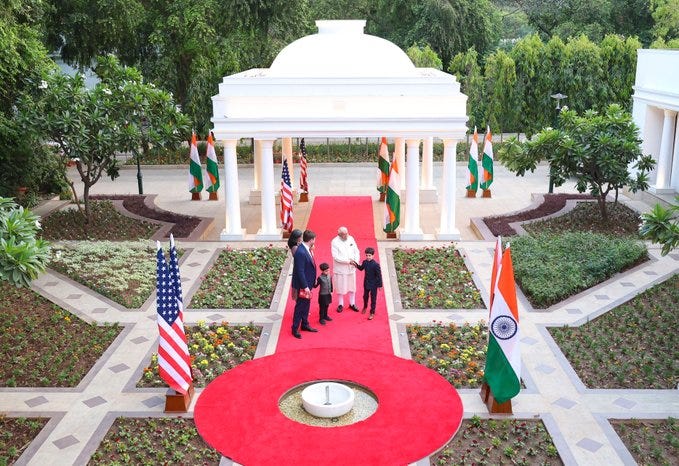India & America: Forging the 21st Century Axis of Stability
“The future of the 21st century will be determined by the India-U.S. partnership.” — U.S. Vice President J.D. Vance, New Delhi
In a rapidly shifting global order, with China’s military ambitions expanding and energy security reshaping the world’s alliances, Vice President J.D. Vance’s remarks during his strategic visit to India are a clear signal: India is no longer just a partner—it’s a pillar.
🇺🇸🤝🇮🇳 A New Strategic Compact
Vice President Vance didn’t mince words. In back-to-back statements, he emphasized that both India and the U.S. share a “mutual understanding” that the Indo-Pacific region must remain free of hostile powers. This veiled reference to Chinese aggression was accompanied by a direct overture: Washington wants New Delhi to increase purchases of U.S. military hardware.
The call is more than transactional—it's foundational. India and the U.S., Vance declared, “have much to gain by strengthening energy ties,” especially in the nuclear sector.
In a diplomatic breakthrough, Vance welcomed India’s budgetary amendment to its nuclear liability laws—a major step that clears the way for deeper cooperation in civil nuclear energy. The long-standing liability concerns that once discouraged U.S. nuclear firms are now being addressed. Vance was clear:
“I believe America’s energy can help realize India’s nuclear goals.”
The Great Power Equation: Defense, Drugs, and Dollars
Meanwhile, Europe isn’t standing still. Spain’s Prime Minister Pedro Sánchez announced that Spain will not only hit the NATO-mandated 2% of GDP defense target in 2025 but will also earmark an additional €10.4 billion in defense spending. This move positions Spain as a serious contributor in European security, amid Russia's continued destabilization of the eastern front.
Across the Atlantic, the Trump administration appears to be reviving one of its most populist economic crusades: lowering U.S. drug prices to match international levels. If enacted, this could be one of the most politically disruptive policy shifts of the second Trump term, undercutting Big Pharma while aligning U.S. prices with those in Europe and Asia.
A Bipolar Century or a Sovereign Bloc?
What we’re seeing unfold is not just a network of defense deals and trade agreements—but the emergence of a new global power architecture:
The U.S.-India energy and defense corridor could serve as a counterweight to China’s Belt and Road.
Spain’s expanded military spending hints at a resurgent European defense identity beyond NATO dependency.
Trump's potential pharmaceutical pivot signals a domestic economic realignment aimed at middle-class sovereignty, not corporate consolidation.
Final Thought: A Strategic Convergence
Vance’s trip and statements are not mere optics. They are the laying of cornerstones.
India is the fulcrum of the East. The U.S. is recalibrating its supply chains, energy exports, and defense partnerships for a post-globalist, multi-polar world. And Europe—spurred by conflict and economics—is waking up.
This is not just about defending the present. It’s about writing the blueprint for the 21st century—with sovereign nations, not supranational technocracies, at the helm.







A new global power architecture? This sounds wise and overdue. Lowering drug prices, good. Shifting away from a sick care model to a health care model grounded in self care, elimination of toxins while embracing physical and spiritual wellness, great. Question: What is Trump's "pharmaceutical pivot" you refer to?